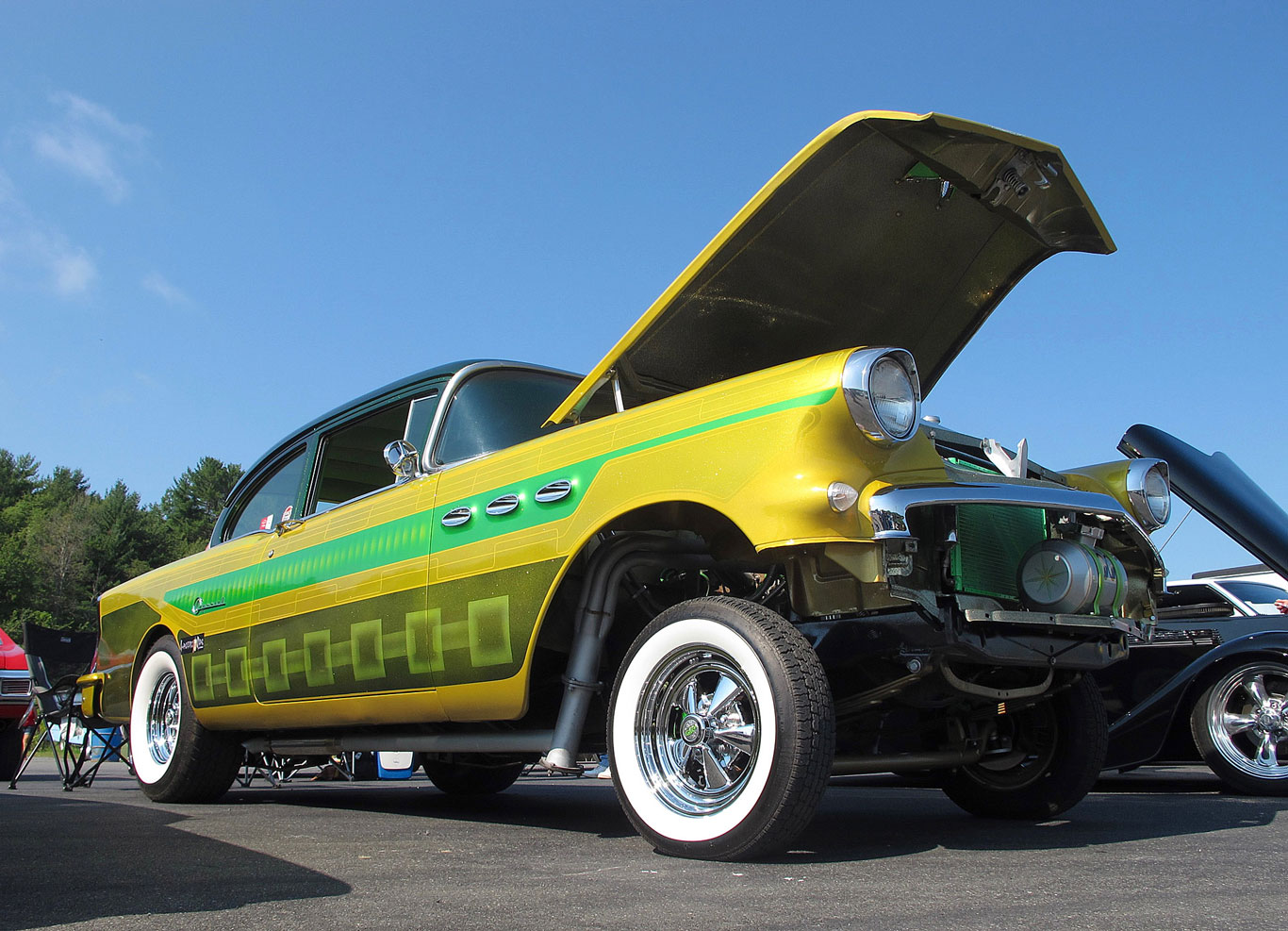Turning up their noses: Gassers still rule the strip and the street
What happens on the dragstrip doesn’t always stay on the dragstrip.
Want proof? Look at today’s rat rods, which clearly descend from the scrappy hot rods that pioneered the quarter-mile sport. Want more proof? How about those pumped-on-steroids Pro Street machines, all hood scoop and steamroller tires, which draw inspiration directly from the National Hot Rod Association (NHRA) racing’s Pro Stock cars.
Gassers are another quarter-mile niche that migrated to street duty and prospered as nostalgia-dragstrip regulars. They’re named for a racing class that, among other restrictions, ran on gasoline rather than nitromethane or alcohol. The resurgence and appreciation of the All-American gasser even has some of the original racecars appearing at “reunion” races. Street-legal gasser-style customs are also venturing onto the street at cruises and car shows.
In their racing heyday during the 1960s and ’70s, gassers were often based on fat-fender bodies – though small imports like the Ford Anglia were also popular — with straight-axle front ends and fuel-injected V-8s shoehorned into place. The rulebook allowed front bumpers to be discarded, and the gas to power each run was typically stored in an alloy tank where a grille once gleamed. Frequently, the hood and front fenders were stitched into a single, forward-tilting unit.
The gasser look and stance – nose-high, the better to transfer weight to the rear wheels for traction – largely returned with the rise of vintage and nostalgia drag racing in the ’90s.Thanks to the efforts of vintage-racing clubs like the East Coast Gassers and Geezer Gassers, updated and newly built race cars appeared as a tire-smoking, wheelstanding throwback to a less complicated era.
The most radical examples of the gasser species were the supercharged entries, split off into separate classes by virtue of the Roots-type positive-displacement blowers mounted above the intake valley of their V-8 engines. On the strip, the superchargers that ruled were belt-driven units adapted from GMC diesels.
Cast-off bodies like Willys coupes were purchased for peanuts from wrecking yards and converted into thundering track monsters. From the factory, a 1933 Willys made about 48 horsepower. Adding a supercharged V-8 and raising the front end with arched springs and a straight axle made for some interesting handling and hugely entertaining racing. Gassers gained popularity and performance through the ’60s, and the best were capable of running over 160 miles an hour.
The arrival of factory-designed altered-wheelbase entries and the rise of the Funny Car, along with new approaches to aerodynamics and maximizing traction, assured the decline of the gasser genre. Racers moved on to Corvettes and sleeker models.
What worked for drag racers a half-century ago is, admittedly, not the best setup for everyday motoring. Still, that frozen-in-time look holds a powerful appeal, and the hairy handling that results has not stopped a good number of enthusiasts from bucking the Pro-Touring trend and heading back in time to gasser-style builds. Those cars may never see a dragstrip, but cruising down the boulevard, they turn back the clock like few other machines can.


